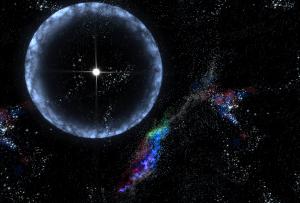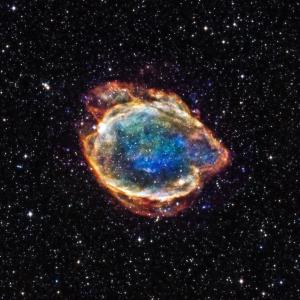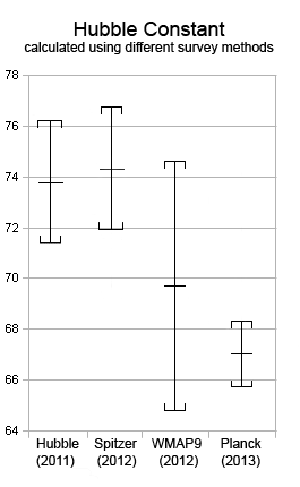Blog
Pantheon of Light and Dark
20 October 2022
 NASA
NASAIn 2011, the Nobel Prize in physics was awarded to Perlmutter, Schmidt, and Reiss for their discovery that the universe is not just expanding, it is accelerating. The work supported the idea of a universe filled with dark energy and dark matter, and it was based on observations of distant supernovae. Particularly, Type Ia supernovae, which have consistent light curves we can use as standard candles to measure cosmic distances. Now a new study of more than 1,500 supernovae confirms dark energy and dark matter, but also raises questions about our cosmological models.1
The study is based on datasets known as Pantheon+ and SH0ES. It contains 1,701 light curve measurements of 1,550 Type Ia supernovae spanning two decades of observations and a cosmic period of 10 billion years. It is the most comprehensive survey of dark energy supernova measurements ever made. The data set covers the transition from the early universe, which was dominated by dark matter, to the modern universe dominated by dark energy. Thus, it confirms the effects of both of these. The data set is so detailed that it also gives us a measure of the Hubble parameter to an accuracy of five sigmas, which rules out systematic errors in our measurements. Based on this data, we know we live in a universe that is about two-thirds dark energy and one-third matter and dark matter.
 NASA/CXC/U.Texas
NASA/CXC/U.TexasBut here’s where things get strange. Over the years we have measured the effects of dark energy and dark matter in numerous ways. In addition to supernova observations, we also see the effects of fluctuations in the cosmic background, the clustering of galaxies over time, gravitational waves, and even microwave laser light. They all tell a similar story of a universe dominated by dark matter and dark energy. But they don’t tell exactly the same story. This is most clearly seen in the discrepancies in Hubble parameter values.
The Hubble parameter, or Hubble constant, is a measure of the rate at which the universe is expanding. Since 2001, we’ve known the Hubble parameter is about 64 to 80 (km/s)/Mpc, giving an age for the universe of somewhere between 12.5 and 15.6 billion years. Back then our uncertainty of the exact value was pretty large. Since then our measurements have gotten more precise, and the value has narrowed down to about 70 (km/s)/Mpc, or 14 billion years. The problem is that supernovae measurements give a value larger than 70, while cosmic background measurements give a value a bit lower than 70. This disagreement is known as the Hubble tension, and it was hoped that better observations would resolve the issue. This latest study confirms it is both real and not going away.
 Wikipedia
WikipediaThe team used the Pantheon+ data to look at two different results. The supernova measure, Pantheon+ SH0ES, gives a Hubble parameter of 72 - 74 (km/s)/Mpc. The cosmic background measure, Pantheon+ Planck, gives a Hubble parameter of 66 - 68 (km/s)/Mpc. Both are very precise, and they contradict each other. The study confirms that the Hubble tension is real. It isn’t due to any error of measurement, and we can’t say that one or the other is wrong.
This study has basically thrown down the figurative glove at the feet of theorists. Given our big bang, dark energy, and dark matter universe model is confirmed, how do you resolve this disagreement in observations? The short answer is that we don’t know, but it will be an exciting mystery to figure out.
Brout, Dillon, et al. “The Pantheon+ Analysis: Cosmological Constraints.” The Astrophysical Journal 938.2 (2022): 110. ↩︎